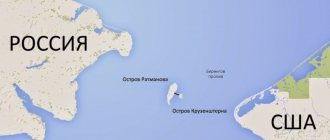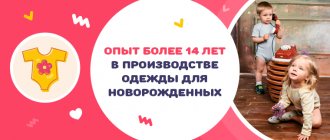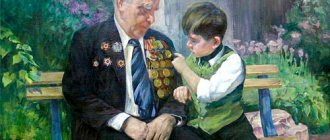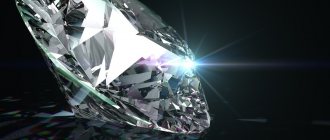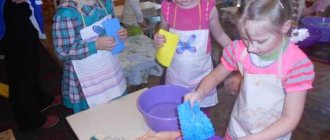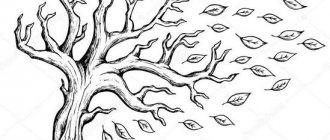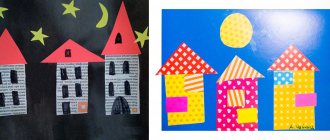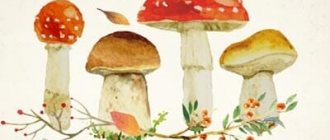What is a rainbow?
So, how to explain to a child what a rainbow is? People have long tried to understand the nature of this incredible phenomenon. But before there was no such knowledge about the world as there is now. It was impossible to say exactly what it was. Therefore, many legends are associated with the rainbow. For example, in Ancient Greece it was believed that a rainbow was a bridge connecting heaven and earth, along which the messenger from the gods Iris traveled to people every day. In ancient India, a rainbow was the bow of the god of thunder and lightning, Indra. And in China they believed that the rainbow is a heavenly dragon that protects heaven and earth.
The ancient Slavs also considered the rainbow to be a bridge that connected heaven and earth, along which angels descended from heaven to our earth to collect water from a river or lake. They then poured the collected water into the clouds, from which life-giving rain came.
Many peoples still consider rainbows to be a bad omen. The rainbow was imagined as a bridge over which the soul of the deceased passes to another world, and when a rainbow appeared in the sky, it meant someone's imminent death.
But all these are nothing more than myths that have no basis in reality. Rainbows have also been associated with some other natural phenomena. For example, signs related to weather prediction have appeared: if the rainbow is high and steep, then there will be good clear weather, and if it is low and flat, then the weather will deteriorate.
The very first scientist to reveal the concept of a rainbow to the world was the ancient Greek thinker Aristotle. He was the first to realize and tell everyone that a rainbow is not an optical illusion or magic or some kind of material thing, but a complex optical phenomenon.
Where does a rainbow come from?
A rainbow occurs when the sun's rays penetrate water droplets in the air, causing them to refract and form an amazing spectrum of colors - a rainbow.
This natural phenomenon occurs when the sun breaks through the clouds, it is about to rain or it has just stopped. The rays of the sun penetrate the raindrops, which in turn work as a diffuser, like a filter, scientifically called a “prism”, breaking the white light of a sunbeam into different colors. Drops of water deflect light at different distances, which is why a multi-colored strip is obtained, which in science is called a “spectrum”. The rainbow has a spherical shape, which arises from the shape of the droplet.
How to remember the order of colors on a rainbow?
The most attentive people have already noticed that the rainbow consists of 7 colors, which appear in a strictly defined order. How easy is it to remember this order? We invite you to do this using three simple, humorous sentences:
- How Jacques the Beller Once Broke the Lantern with His Head.
- Every Hunter Wants to Know Where the Pheasant Sits.
- The Mole sewed blue sweatshirts for the Sheep, the Giraffe, and the Bunny.
How to make a rainbow at home?
- "Rainbow Film" experiment. We'll need a plate of water and clear nail polish. Drop a drop of varnish into a bowl of water and observe how a film forms on the surface. Now let's bring it to the light source. When a ray of light hits the surface of the water with the film, you will see a rainbow!
- Rainbow Disc Experience. A very simple experience! We take a CD or DVD, shine light on it and enjoy what we see. The entire spectrum of the rainbow will be reflected directly on the surface of the disk.
My son and I conducted such an experiment and were incredibly delighted with the beauty and brightness of the rainbow we saw. This experience, among others, is reflected in my Letter City.
- Experience with soap bubbles. We will need a jar of soap bubbles and a light. For example, you can do this near a window in sunny weather or near a bright lamp. We release soap bubbles and look at them. Did you see that they shimmer with all the colors of the rainbow? That's right, a soap bubble is also a prism!
Rainbow drawing can also be a very exciting creative activity. It uses paints and a regular sponge. The play of colors is smooth, almost like a real rainbow! I talked more about this drawing in this article.
Let's summarize what a rainbow is for children: a rainbow is not magic, although... in every natural phenomenon there is a miracle... A rainbow is a complex phenomenon that occurs only under certain conditions: after rain or before rain, when it peeks out from behind the clouds Sun. However, the complexity of the rainbow has never stopped anyone from rejoicing and being amazed at its amazing and unique beauty.
Work program for the Rainbow program, senior group.
the child is capable of volitional efforts, can follow social norms of behavior and rules in various types of activities, in relationships with
adults and peers, can follow the rules of safe behavior and personal hygiene;
the child shows curiosity, asks questions to adults and peers, is interested in cause-and-effect relationships, and tries to independently come up with explanations for natural phenomena and people’s actions; inclined to observe and experiment. Has basic knowledge about himself, about the natural and social world in which he lives; is familiar with works of children's literature, has basic understanding of wildlife, natural science, mathematics, history, etc.; the child is capable of making his own decisions, relying on his knowledge and skills in various activities.
Based on the results of mastering the Rainbow Program, the child:
has physical development corresponding to age normative indicators; he has developed basic physical qualities, the need for physical activity and movement; shows individual interest in some form of physical activity (sports, choreography);
has basic cultural and hygienic skills; implements them independently and consciously in his life;
understands and shares the value of a healthy lifestyle, knows how to follow basic rules for protecting one’s own health and the health of others, has an age-appropriate understanding of safe behavior in everyday life, in nature, among strangers; cognitively active, inquisitive, able to independently research, experiment, find a variety of information in various sources - books, encyclopedias, films, and also knows how to ask adults questions of interest; has its own area of interest;
is independent and at the same time knows how to turn to adults for help;
interested in learning and improving one’s own competence in various fields of activity, has the universal prerequisites for educational activities: the ability to work according to rules and patterns, listen to an adult and follow his instructions;
emotionally responsive, capable of empathy and sympathy, responds to the emotions of loved ones, empathizes with characters when perceiving works of fiction, theater, cinema, visual arts, music, as well as the beauty of the surrounding world, nature;
sociable, able to adequately use verbal and non-verbal means of communication, able to conduct a dialogue and express his thoughts using monologue speech; knows how to negotiate with peers, plan joint activities, has cooperation skills; has a communication style with adults and peers and can change it at will;
Poems about rainbows
When telling children what a rainbow is, include in your story the poetic inspiration of poets of all times and peoples, inspired by a multi-colored arc in the sky.
* * *
It got caught on a cloud and hangs above us. She has seven different stripes, We counted them!
Who will answer the question: What is this? This is a miracle - who brought it? How beautiful!
You guessed it! Yes, yes, yes, it's a rainbow-arc!
The sun and the rain played and the toy was lost, and now for everyone it is visible from the blue skies!
Rainbow
Alexander Byvshev
A multi-colored rocker hung above the ground. Spring rays are pouring, Rooks are bathing in them.
And the meadows, washed by the water of the long-awaited rain, Whisper joyfully: “Hello, rainbow-arc!”
Rainbow
Inna Gamazkova
The rooster saw a rainbow: - What a beautiful tail! The ram saw a rainbow: - What a high bridge! / And the horse looks at the rainbow: - The horseshoe is great... The river looks into the rainbow: - And there is a river in the sky?
Rainbow
Vladimir Stepanov
A rainbow hung in the spring sky, looking cheerfully from the sky to the earth. We smiled joyfully in response: - Rainbow - rainbow, color - overexposure.
The rainbow did not hang in the sky for long, It did not look from the sky to the earth for long: It melted... What did it leave as a souvenir for everyone?
Red poppies, Yellow sand, Green light on a leaf on a branch.
The purple beetle warms its sides, the blue splashes the river into the banks.
The forests are warmed by the orange sun, and the starling has blue... eyes.
* * *
Inna Kulskaya
The sky is belted with a rainbow-arc. And the golden sun looked through the clouds.
Bright rain fell on the asphalt, jumping onto my hands, onto my shoes.
* * *
Rainbow - rainbow, multi-colored ribbon! The rainbow has seven colors, all colors are noticeable! You are always elegant, ringing, like a song. It's good to ride on the rainbow, it's fun!
Komovskaya N.
* * *
- Rainbow, tell me, What power united all your colors? “This is friendship,” Rainbow answered. — The colors in the rainbow are friends, Guys. The Rainbow is rich in strong friendship, radiating a clear light.
Bayramov N.
* * *
Joy, you see, what a joy! There's a rainbow in the sky! Colors of wondrous beauty near the celestial RA-arc. Seven colors came together, like notes in a friendly song. Here is the Sun in yellow, the green of all the forests of the planet, the blue of the heavenly depths, purple dreams. Who entrusted the staff of music to all colored pencils?
Vita E.
* * *
In the sky the rainbow shines and glitters, As if the passage through it is open to us. A multi-colored ray descended from the sky, The forest shines in the beautiful rainbow dust.
The foliage shimmers like an emerald, Reflections of the rainbow are visible here and there, The forest plunged into a fairy tale and became silent, It wants to hold on to the wonderful moment.
Science has long explained everything to us, but it is not possible to fully understand nature. Seeing a rainbow in the blue sky, We dream that these are symbols from the outside.
Delight takes us into a sky-high flight, Perhaps the answer to a miracle awaits there. The rainbow shines for us, fresh and good, The bright colors make our eyes glow with happiness.
Mordovina I.
* * *
How unexpectedly and brightly, In the damp blue of the sky, An airy arch rose in its momentary triumph! She stuck one end into the forests, with the other she went behind the clouds - She grabbed half the sky and was exhausted in the heights.
Oh, in this rainbow vision What bliss for the eyes! It is given to us for a moment, Catch it - catch it quickly! Look - it has already turned pale, Another minute or two - and then what? Gone, somehow it will go away completely, What you breathe and live with.
Fyodor Tyutchev
* * *
There is thunder and thunderstorm in the sky. Close your eyes!
The rain is over. The grass is shining, there is a rainbow in the sky.
Hurry, hurry, run out the door, barefoot across the grass, jump straight into the sky.
Okay, okay! Along the rainbow, along the iris, Along a colored arc on one leg. Down the rainbow on horseback And to the ground somersault!
Samuel Marshak
Along the paths of the rainbow
Abstract of GCD on the formation of elementary mathematical concepts in the senior group
Target
: generalization and consolidation of knowledge among children of the senior group on the topic of material for the school year.
Educational tasks
: consolidate quantitative and ordinal counting from 1 to 10 and back, understanding the number series;
consolidate skills in comparing the number of objects; consolidate the ability to navigate on a sheet of paper; continue to form an idea of the table. Developmental tasks
: train mental operations;
develop spatial and logical thinking, attention, speech, curiosity, emotions, interest in independently solving problem situations. Educational objectives
: to cultivate mutual assistance, independence, determination, perseverance.
Materials and equipment
: projector, presentation, ball, easel, paper flowers with tasks, cards with numbers, geometric bodies (cube, ball, prism, cone, pyramid, parallelepiped, cylinder);
white dish, Skittles candies, warm water for experiment, musical accompaniment: “Rainbow Song” lyrics. and music T. Shikalova. Handouts
: cards for comparing numbers, cards with passports of geometric bodies, a set of numbers, table cards, geometric shapes (3 blue triangles, 3 pink squares, 3 green circles).
Progress of activities
Educator
: Guys, can you solve riddles?
Children
: Yes.
Educator
: Then listen carefully.
The rain is over. Having parted the clouds, a ray of sunshine made its way to us. And literally before our eyes, the Bridge appeared in heaven. Multi-colored arc - This is... ( Rainbow
.)
Look at the screen. What a beauty! What could be brighter than a rainbow?
What a miracle, miracles. The rainbow came to visit, And brought paths. And the paths are not simple. They are all magical, colorful. Whoever walks along the paths will move on to the preparatory group!
Guys, do you want to go to the preparatory group?
Children
: Yes.
Educator
: Oh, what happened?
The rainbow has disappeared! How do we now move on to the preparatory group? Where did she disappear to? ( Children's answers
.) I wonder if there is some secret here?
Look carefully at the screen! I think I guessed where the rainbow hid! And you?! ( Children's answers. The teacher draws the children's attention to the flowers growing in the clearing
.) In order for the rainbow to appear again, you need to complete math assignments.
They will be very difficult. So guys, be careful! Ready? ( Yes
.) Let's try.
Remember how many colors are in the rainbow? Name them. ( Children's answers
.) They all stand next to each other in strict order. Which flower will we pick first?
Children
: Red.
( The game exercise “Match the numbers” is carried out
.)
Educator
: A strange case, a rare case, Numbers in a quarrel, Here they are! Not one of them wants to stand with their neighbor, We need to reconcile the numbers. And restore their order"
How can you reconcile the numbers? What needs to be done to get them in the right order? ( Children's answers
.) That's right, you need to build a number series from 1 to 10. Take the numbers lying on the table and put them in the correct order.
Well done guys, you completed the task and we have our first rainbow carpet - red. ( A rainbow path appears on the screen
.) What color will the next flower be?
Children
: Orange.
( The game exercise “Name the neighbors of the numbers” is being carried out. The teacher shows cards with numbers.
) Well done, guys, and you did an excellent job with this task.
And we have another track - orange. ( A rainbow path appears on the screen
.) The next flower will be...?
Children
: Yellow.
( A ball game is played in the “Days of the Week” circle. The teacher asks questions
.)
Educator
: How many days are there in a week?
List the days of the week in order. What days are days off? Name the day of the week before Wednesday. Name the day of the week between Thursday and Saturday. What day of the week is it today? ( Children's answers.
) Everyone completed the task and we got another path - yellow.
Choose the next flower. What color is it? ( Children’s answers. The game exercise “More - less - equal” is carried out.
) Compare the number of objects using the signs “<”, “>”, “=”.
Now we will work in pairs. ( Children complete the task.
) Great! Another rainbow path has appeared. What color will the next flower be?
Children
: Blue.
Educator
: That's right (
working at tables in pairs
). Guys, come to the table. What's on the table?
Children
: Figures.
( A game exercise is carried out in pairs “I lost my passport
.”)
Educator
: Let's remember their names.
( Children's answers
.) These figures lost their passports.
But how can we help them? Choose one figure for yourself. The remaining figure will be mine. Listen to the hint. I'll take a card and a piece. Since this figure is three-dimensional, I will look at it from all sides. What does this figure look like from the side? Above? From below? ( Children's answers
.) Let's now try to find her passport among others.
When you find the passport, place the figure on it. Hooray! We now have a fifth blue track. ( Physical minutes are held with musical accompaniment.
) How many flowers are left in the clearing?
What color will the next flower be? ( Children's answers. In the next task, the teacher orally pronounces the text of the problem
.)
The hedgehog brought three apples from the garden. He gave the most rosy thing to Belka. The squirrel happily received the gift. Count the apples on the hedgehog's plate. ( Children count and name the answer. The teacher says the next problem
.)
Well done boys! All problems were solved correctly. Our rainbow is getting wider and brighter! A blue path has appeared! We have one last flower left. Which?
Children
: Violet.
( Game exercise “Fill in the table
.”)
Educator:
You have geometric figures and a table on your tables.
You need to fill out the table correctly. Listen carefully. Place a blue triangle in the upper left corner. Place a blue triangle in the center of the table. Now fill in the empty cells with figures so that they are not repeated either in the rows or in the columns. Happened? Let's check. Well done boys! The last path of the rainbow appeared - purple. Look how the rainbow is shining again! For your efforts, I have prepared a small surprise. ( Finally, a Rainbow experiment is performed using Skittles and water
.)
Lyubov Bukhalova, teacher
at MBDOU “Kindergarten No. 251”, Barnaul, Altai Territory
